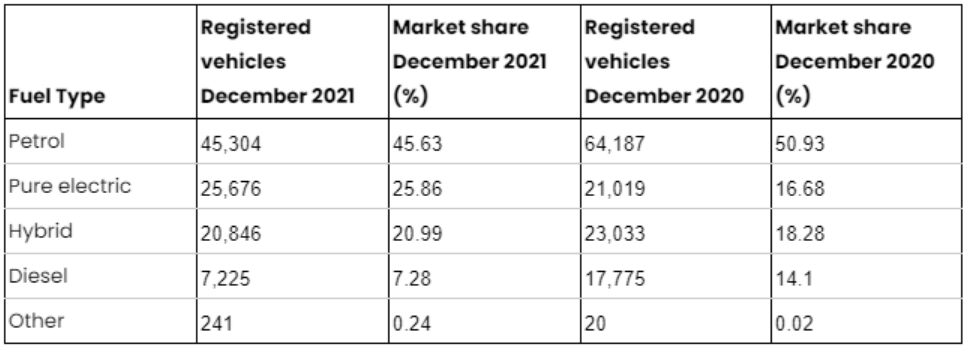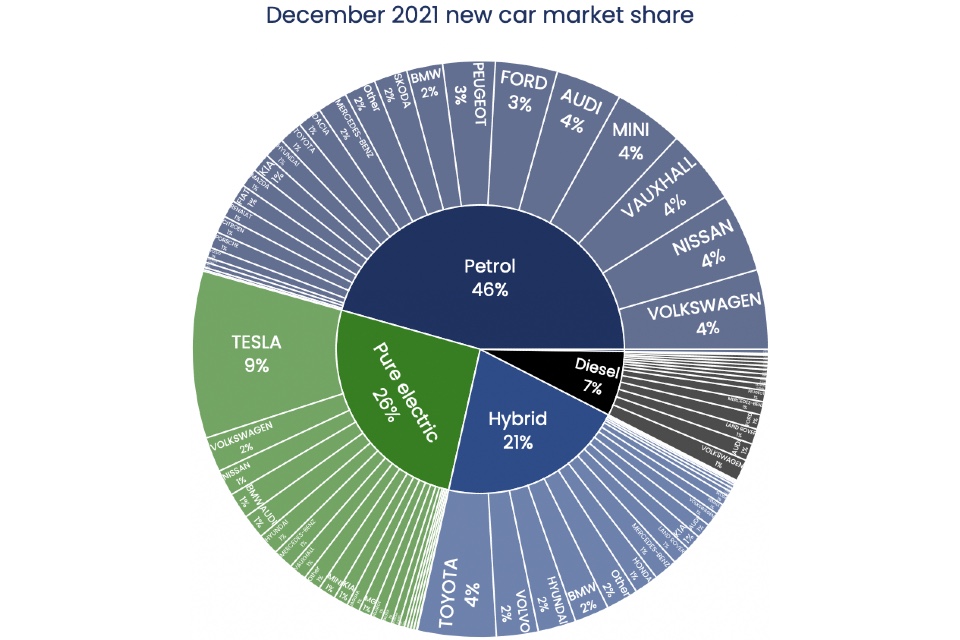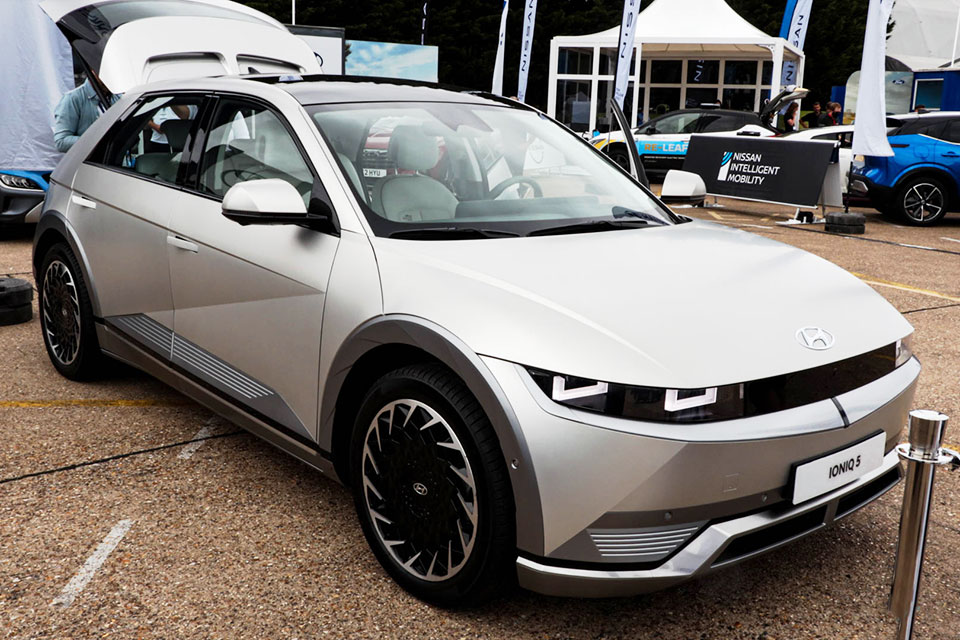Quarter of car sales in December 2021 were electric
https://fleetservicessummit.co.uk/wp-content/uploads/2022/01/NewAutoMotivePieChart.jpg 960 640 Stuart O'Brien Stuart O'Brien https://secure.gravatar.com/avatar/81af0597d5c9bfe2231f1397b411745a?s=96&d=mm&r=gBy WhichEV
Pure electric cars outsold hybrids for the first time on record in December, jumping to second place in the list of most popular fuel types in the UK, according to data from New AutoMotive.
The transport research organisation said that there were 25,676 pure electric vehicles sold in December 2021 up from 21,019 registered in December 2020.

This represents a 25.8% share of the December 2021 market.
The share of petrol cars fell below 50% of the market for the first time since 2016.
Breaking this down by region, Oxford was an EV hotspot in December taking a 40% share of new car sales. Newcastle came second with 31% and Kent was third with 30%.












